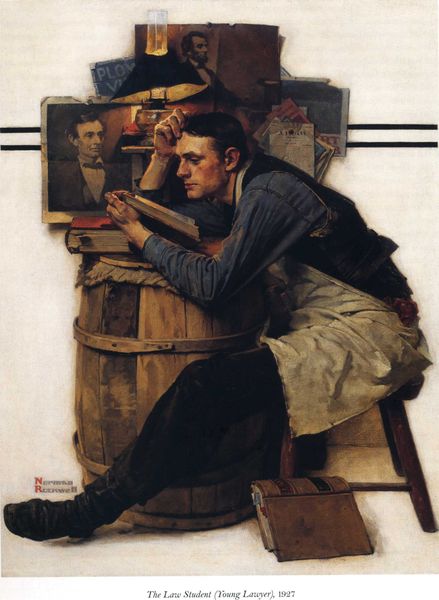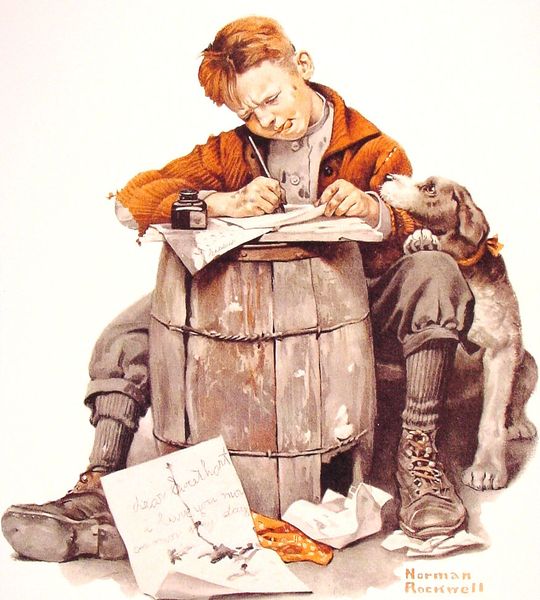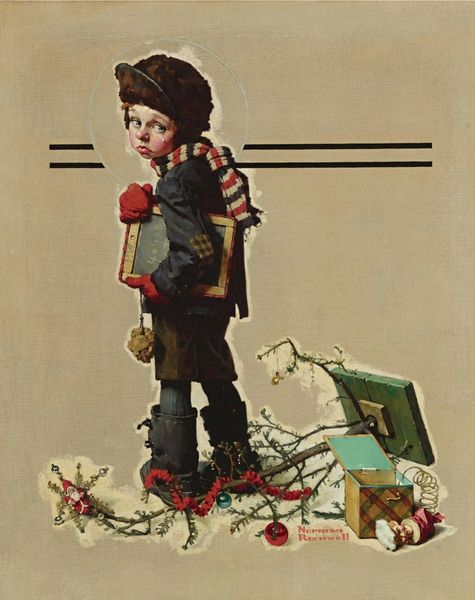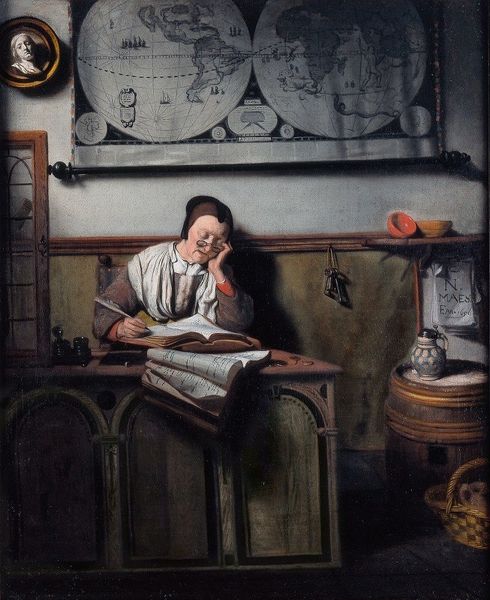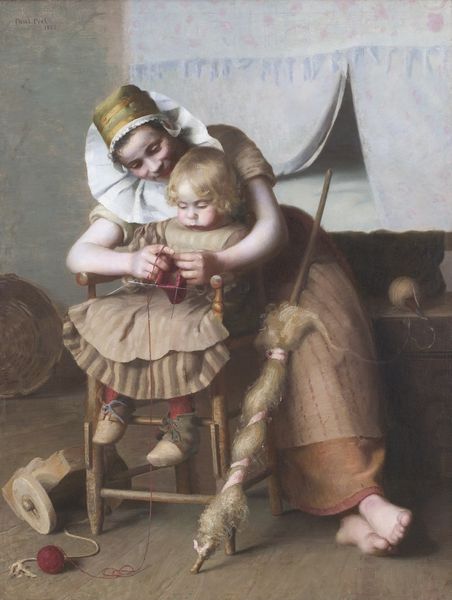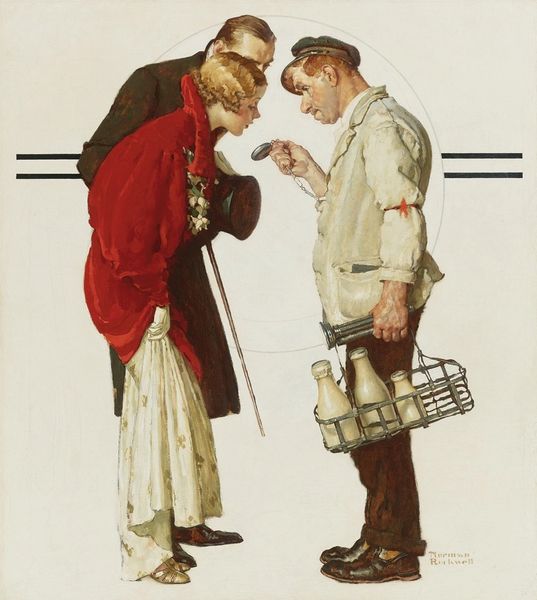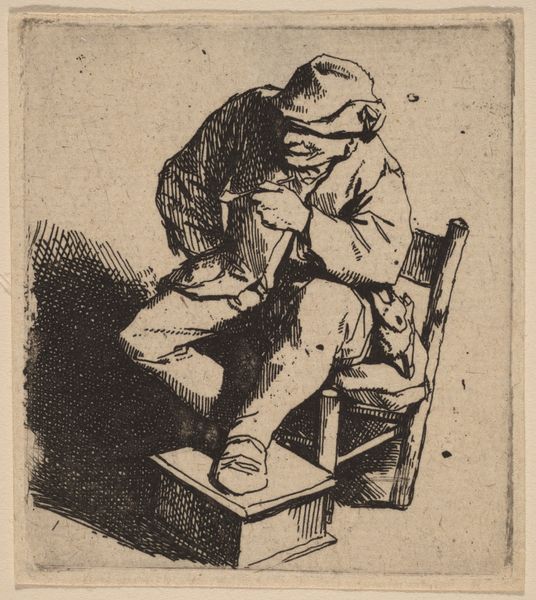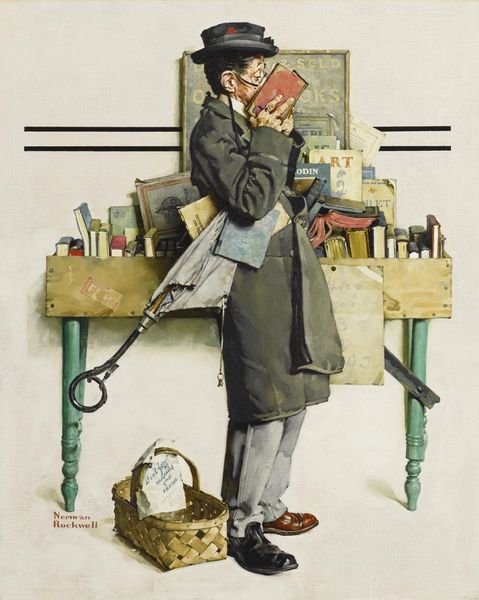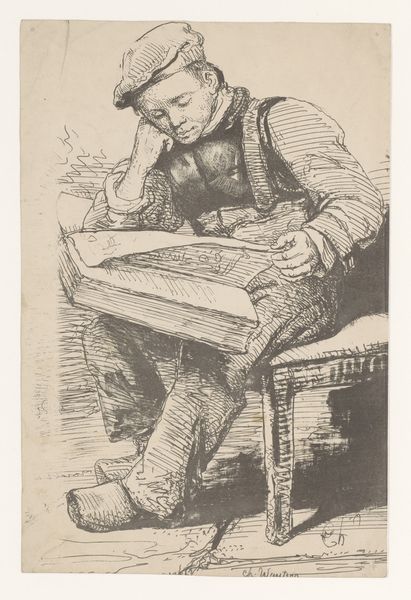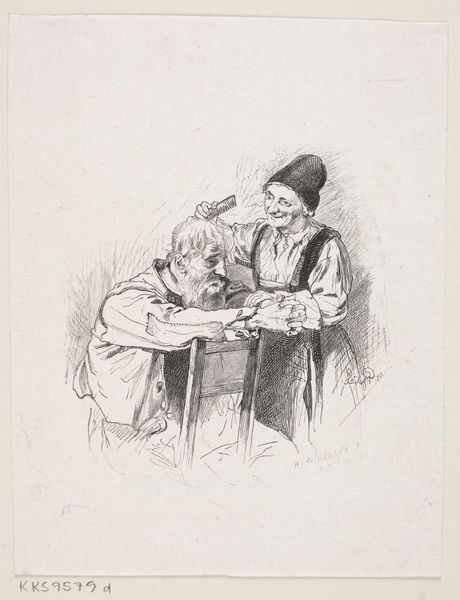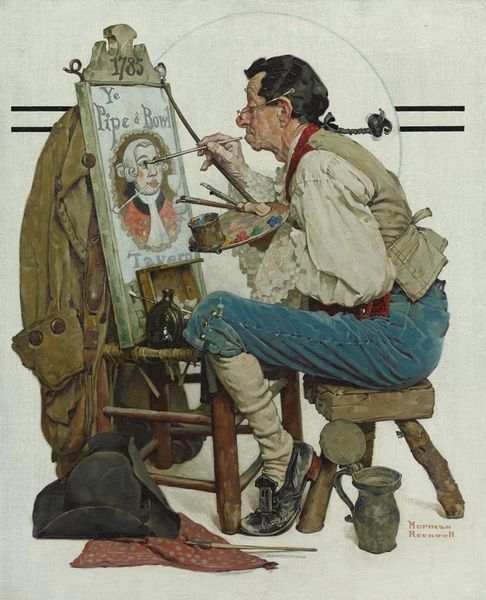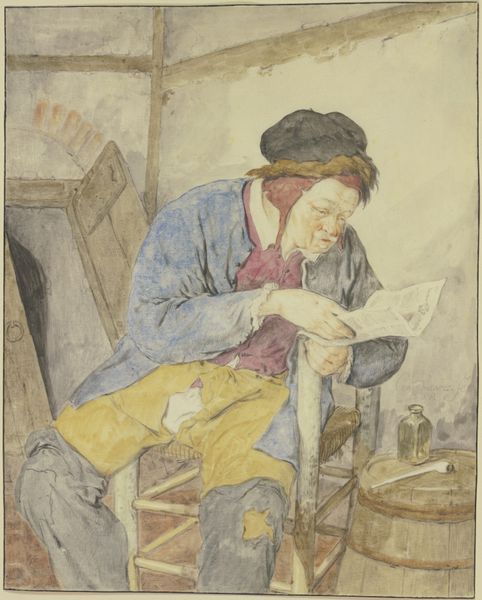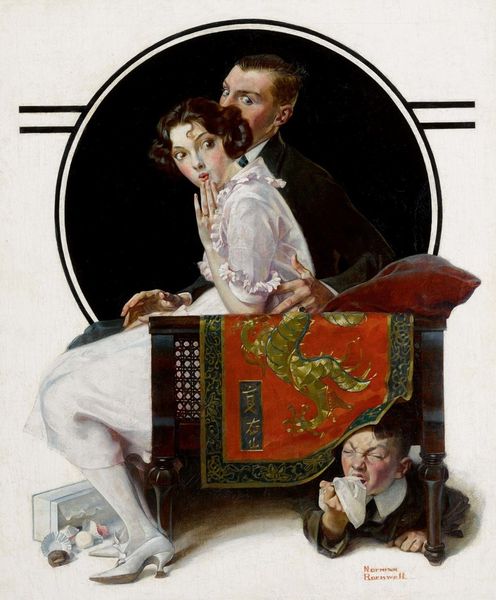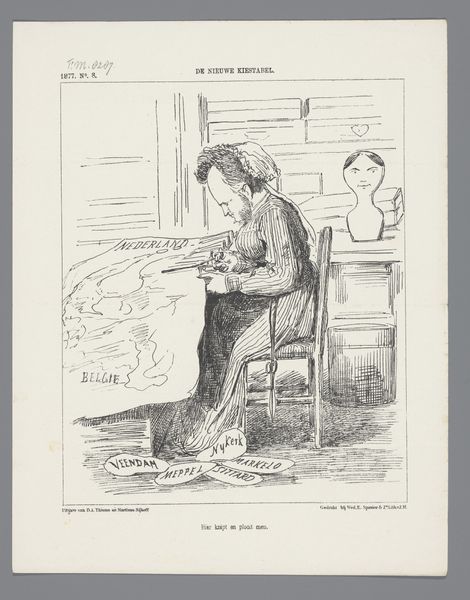
painting, oil-paint
#
portrait
#
narrative-art
#
painting
#
oil-paint
#
oil painting
#
genre-painting
#
portrait art
#
realism
Copyright: Modern Artists: Artvee
Curator: Here we have Norman Rockwell's "Little Boy Writing Letter" from 1920, an oil on canvas work brimming with narrative detail. Editor: Immediately I’m struck by the intensity on that boy’s face – such focus, but also a visible struggle. And then, that dog, looking up at him adoringly, it adds this layer of vulnerability to the whole scene. Curator: Rockwell masterfully employs the tools of realism. We have a fairly ordinary tableau transformed into a meaningful glimpse into this boy's world. A very intentional construction of this little world, you could say. He uses familiar objects and images, which echo and create a narrative far greater than its apparent genre-painting qualities. Editor: Right, the overturned barrel serving as a makeshift desk, the ink stains, and that discarded letter. It hints at an untold story. It speaks to issues of labor and education access – is this letter to a sweetheart? A relative afar? Or could it be a required penmanship task given his visible strain? What broader systemic forces confine this young child and shape his possibilities? Curator: It seems to me the heart of the matter relies upon familiar symbols like handwritten letters and eager dogs which conjure very direct feelings of nostalgia. Rockwell is, after all, a keen observer of sentimentalism and all things quintessentially Americana. I also see Rockwell reflecting on innocence and sincerity—which are qualities people often ascribe to that age group. He does it, moreover, in a world often drained of both. Editor: True, and maybe Rockwell is trying to preserve these sentiments during a period of massive industrial and political shifts. We can question what idealized versions of youth obscure within specific socio-economic landscapes: does Rockwell's narrative distract or highlight a complex network of power structures? Curator: Well, art always reflects both conscious and unconscious attitudes towards our place in time. Symbols can serve both as touchstones, and perhaps, at other times, to veil discomfort with more painful social and historical context. Editor: Absolutely. Thinking about this image further in terms of those conflicting dynamics – I'm struck how art becomes a stage where personal stories meet grand social currents. It's a constant dialogue across eras. Curator: I agree entirely. This piece, viewed today, is another voice added into this continuing conversation. Editor: Yes, it's more about questioning and reflecting. Thanks to Rockwell’s rendering, it also feels quite accessible to many different viewpoints.
Comments
No comments
Be the first to comment and join the conversation on the ultimate creative platform.
